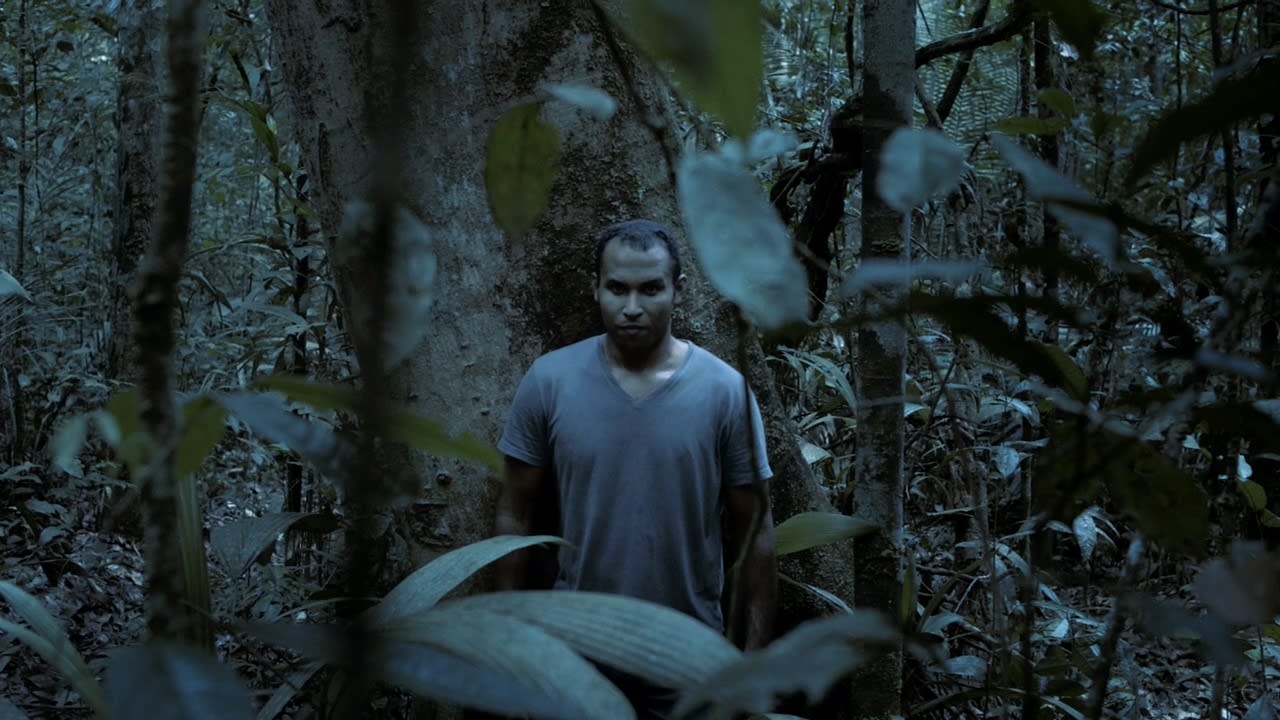Regina Parra
Further images
The stance is that of resistance or affirmation in the video Capitão do Mato, or Captain of the Forest (2016). Filmed in the Amazon rainforest, it has as its starting point the bird of the species Lipaugus vociferans, whose scientific name means “dark screamer.” Popularly known as “captain of the forest,” this bird inhabits a large part of the forests of Latin America and was considered a whistleblower of the fugitive slaves who went into the woods, because it denounces the presence of strangers with its high-pitched and shrill song, demarcating its territory. Because of this, the popular name of the bird was also given to men who guided themselves by the song of the bird when they walked in silence in the woods in search of escaped slaves.
In Parra’s video, we follow in the footsteps of a man who walks through the woods. We always see him from the back, in the distance, never with clarity or definition, from a subjective look, which puts us in the role of someone looking for or chasing something. We go with this look scanning the forest, unknown, dense, mapping its spaces. The sound of footsteps and breathing creates tension and gives us the feeling that something is going to happen very soon.
As we walk, the noise of the “captain of the forest,” of the scavenger bird, becomes louder and clearer when compared to the other sounds of the forest, a sign that we are approaching something we are looking for, without knowing for sure what it is. When, at last, we find a man, Black, in front of a tree, facing the viewer. Instead of running away or putting himself in a posture of submission, as Black people have been forced to do for so many centuries.This man asserts his presence and makes the sound of the bird that once denounced him. His tone is not one of threat, but of affirmation.
Text by Jacopo Crivelli Visconti, curator of Sao Paulo Biennial. On the occasion of the exhibition Brazil: Knife in the Flesh, Padiglione d’Arte Contemporanea, Milan, 2018.
Exhibitions
Why are you trembling woman?, curated by Moacir dos Anjos, Galeria Millan, Sao Paulo, Brazil.
Knife in the Flesh, curated by Joacopo Crivelli Visconti, PAC_Padiglione d'Arte Contemporanea, Milan, Italy

